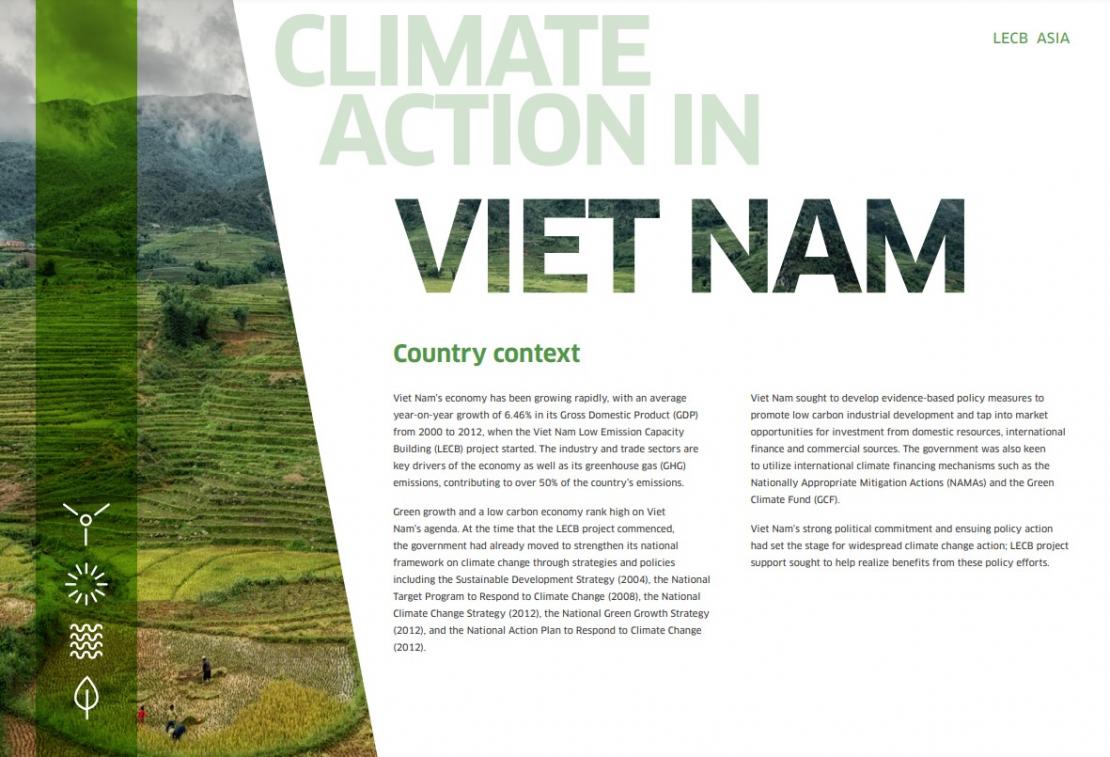LECB Programme Impact and Results: Viet Nam

Viet Nam’s economy has been growing rapidly, the industry and trade sectors are key drivers of the economy as well as its greenhouse gas (GHG) emissions, contributing to over 50% of the country’s emissions. Green growth and a low carbon economy rank high on Viet Nam’s agenda. At the time that the LECB project commenced, the government had already moved to strengthen its national framework on climate change through strategies and policies including the Sustainable Development Strategy (2004), the National Target Program to Respond to Climate Change (2008), the National Climate Change Strategy (2012), the National Green Growth Strategy (2012), and the National Action Plan to Respond to Climate Change (2012).
Viet Nam sought to develop evidence-based policy measures to promote low carbon industrial development and tap into market opportunities for investment from domestic resources, international finance and commercial sources. The government was also keen to utilize international climate financing mechanisms such as the Nationally Appropriate Mitigation Actions (NAMAs) and the Green Climate Fund (GCF).
Viet Nam’s strong political commitment and ensuing policy action had set the stage for widespread climate change action; LECB project support sought to help realize benefits from these policy efforts.

